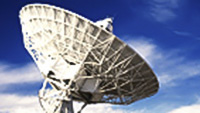Search and order online
Biomass instrument in action
- Video Online only
- Title Biomass instrument in action
- Released: 10/02/2025
- Length 00:01:10
- Language English
- Footage Type Animation
- Copyright ESA/ATG medialab
- Description
Carrying a novel P-band synthetic aperture radar, ESA’s Earth Explorer Biomass mission is designed to deliver completely new information on forest height and above-ground forest biomass from space. It is the first satellite to carry a P-band synthetic aperture radar. The animation shows how the instrument generates these radar pulses and receives data.
The feed array, which transmits and receives the radar pulses, is mounted on the outside of the satellite, at the base of the instrument panel. It consists of four patches arranged in two pairs, called doublets. On the inner side of the instrument panel, the complete layout of the instrument is visible. The digital control unit serves as the core of the instrument, overseeing control and internal calibration.
To transmit radar signals to Earth, the calibration and distribution network directs the signals from the digital control unit to the power amplifier subsystem, which amplifies the signal to a peak power of +49.5 dBm. The power amplifier subsystem includes two identical assemblies, one for vertical and one for horizontal polarisation. To receive the radar echoes from Earth, the receive amplifier boosts the incoming signal and forwards it to the calibration and distribution network for each polarisation. The instrument has two receive amplifier units, one for vertical and one for horizontal polarisation.
The animation illustrates how the transmit pulses generated by the digital control unit are routed to the power amplifier subsystem for signal amplification. The pulses are then transmitted to Earth by the feed array and the large deployable reflector. As this is a fully polarimetric system, pulse transmission alternates continuously between horizontal and vertical polarisation.
Following signal reception by the reflector, the radar echo is instantaneously received for both polarisations and passed through the low-noise amplification stages, allowing the received signals to be detected, digitised and stored onboard the satellite.


